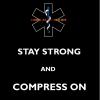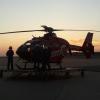Leaderboard
Popular Content
Showing content with the highest reputation on 12/29/2009 in all areas
-
I'm curious to seek a response on this issue. I brought it up in chat and got a good response. My agency has been talking for a while about removing Lasix for our guidelines. We practice evdience based medicine and always are looking to see what's good and what's not so good. I myself rely on early SL NTG and CPAP with Tridol Drips. I want to see what other providers think about this. Vote on the poll and then DISCUSS wether or not the use of pre-hospital Lasix is beneficial, harmful,or a back-in-the-day TX that should of been removed ages ago. Here's some food for thought references and studies: http://http://chestjournal.chestpubs.org/content/92/4/586.full.pdf From 1987 http://http://emergency-medicine.jwatch.org/cgi/content/full/2006/613/1 From 2006 To take it a step further... What do you think about the removal of MS in tx for pulmonary edema?1 point
-
1 point
-
What do you mean by "get my hands dirty"? You mean experience or blood and guts? Experience will come with time. If you work with a busy service, experience comes sooner than later. If you work with a busy 911 service, you could have the blood, guts, glory, and experience. It just depends on where you work. If you plan to stay in a rural area, you'll get some good experience but again, how busy is this service? Good luck to ya!1 point
-
I don't support lasix pre-hospital; it might have been a good treatment a decade or two ago (but heck so were M*A*S*H pants (MAST) and prophylactic lidocaine right?). A patient with a CPE is going to be third spaced and may infact be hypovolemic, so if we dose up him on lasix he's going to piss like a racehorse at the Kentucky Derby and deplete more volume. We also run the risk of causing him to become [more] hypokalemic or hyponatremic. Differential diagnoses is also really important and something I anecdotially hear a lot of medics are pretty bad at; it doesn't take a rocket scientist to work out a chest infection from a CPE yet apparently it's out there! The Los Angeles study cited includes differential diagnoses of LOWER BACK PAIN and HYPERVENTILATION as those who may or may not recieved GTN, laxis and morphine as the Paramedic assessment was a CPE. Does anybody see the problem with potentially loading up somebody on these drugs, and, more overarching, working up LOWER BACK PAIN as a pulmonary edema? It's 5am here and I tell you what in my semiconscious state, I can differentiate a CPE from wait for it, LOWER BACK PAIN! Now, where did I see LACoEMSA pull frusemide from lately, ah yes, Los Angeles .... suprised? I'm mixed on morphine use in CPE. Now I did see one study (retrospective) on CPE outcome in hospital where ambo had dished out morphine but it was poorly designed and I bet was riddled with false positivies. http://www.ncbi.nlm.nih.gov/pubmed/18973635?itool=EntrezSystem2.PEntrez.Pubmed.Pubmed_ResultsPanel.Pubmed_RVDocSum&ordinalpos=18 http://www.ncbi.nlm.nih.gov/pubmed/19234030?itool=EntrezSystem2.PEntrez.Pubmed.Pubmed_ResultsPanel.Pubmed_RVDocSum&ordinalpos=14 These studies suggest it may infact be of harm and not benefit. I was educated that morphine is not an effective treatment for CPE and is used for relief from anxiety and (possibly?) some of its bronchodialatory effects but I bet you there's better bronchodialators out there than morphine, salbutamol anybody?1 point
-
I like to take opportunities like that to figure out why it is that it was the right thing to do - its always more interesting just after a 'realistic' scenario. Grab a textbook, or Google some terms to get familiar with a few of the important concepts involved. 'Tidal volume' and 'anatomical dead space' are the things to be Googling if you don't understand them already. I don't don't know where you're at education wise, but the difference between 'hyperventilation' and 'tachypnea'; and 'ventilation' and 'oxygenation' are fundamentally important to understand too. There seems to be a lot of conflict regarding these relatively simple ideas and it is potentially very dangerous for the pt if their EMT acts on a faulty understanding of these ideas.1 point
-
http://www.emtcity.com/index.php/topic/17045-trauma-%2310/page__hl__trauma__fromsearch__1 http://www.emtcity.com/index.php/topic/16990-trauma-episode-9-11-23-2009/page__hl__trauma__fromsearch__1 http://www.emtcity.com/index.php/topic/16921-trauma-episode-8/page__hl__trauma__fromsearch__1 http://www.emtcity.com/index.php/topic/16862-trauma-episode-7/page__hl__trauma__fromsearch__1 http://www.emtcity.com/index.php/topic/16812-trauma-episode-6/page__hl__trauma__fromsearch__1 http://www.emtcity.com/index.php/topic/16742-trauma-episode-5/page__hl__trauma__fromsearch__1 http://www.emtcity.com/index.php/topic/16661-trauma-episode-4/page__hl__trauma__fromsearch__1 http://www.emtcity.com/index.php/topic/16954-trauma-revived-after-cancellation/page__hl__trauma__fromsearch__1 http://www.emtcity.com/index.php/topic/16872-trauma-may-not-air-remaining-episodes/page__hl__trauma__fromsearch__1 http://www.emtcity.com/index.php/topic/16524-somebody-doesnt-like-trauma/page__hl__trauma__fromsearch__1 http://www.emtcity.com/index.php/topic/16768-nbc-cancels-trauma/page__hl__trauma__fromsearch__1 http://www.emtcity.com/index.php/topic/16671-saved-and-trauma/page__hl__trauma__fromsearch__1 http://www.emtcity.com/index.php/topic/16670-trauma-versus-roy-and-gage/page__hl__trauma__fromsearch__1 Just a few threads about this to get you started1 point
-
My boyfriend has a gshock that does elevation (good for CO where we live), temperature, and the time stuff. He likes it. Personally it is big and clunky for my taste but he's a guy so I guess it is more acceptable for him.1 point
-
My personal thought is that you get what you pay for. With that in mind, my personal recommendation is a Citizen Eco-Drive. Very durable, you never have to worry about replacing the battery, and most come with a perpetual calandar that never needs to be set. You will also find that the lume is great and lasts for hours. I have two that I wear in the field (Nighthawk and Calibre 3100), one of which i've worn for 6 years without an issue (Nighthawk). The best quality for the price IMHO.1 point
-
i guessed i should of just asked what watch you all use that way i can see what i like best1 point
-
If it's for work, then buy a cheap plastic watch that you can wash, or don't care if it gets broken etc., make sure it has an easy read dial with a second hand.1 point
-
Bledsoe did provide some misleading information in that article. From the AAP and the 2005 NRP guidelines which were in effect when he published that articls: For babies born at term, • The Guidelines recommend use of 100% supplemental oxygen when a baby is cyanotic or when positive pressure ventilation is required during neonatal resuscitation. • However, research suggests that resuscitation with something less than 100% may be just as successful. It does not say room air. Some do start at 40%, 50% or 60% but not room air. • If resuscitation is started with less than 100% oxygen, supplemental oxygen up to 100% should be administered if there is no appreciable improvement within 90 seconds following birth. You do not wait for "failure". • If supplemental oxygen is unavailable, use room air to deliver positive-pressure ventilation. This article did more to explain the death of the hypoxic drive theory by way of the release of hypoxic pulmonary vasoconstriction and ventilation/perfusion mismatching. http://chestjournal.chestpubs.org/content/124/4/1312.full'>http://chestjournal.chestpubs.org/content/124/4/1312.full From the article (if this is the article you referenced): But then for asthma, oxygenation is generally not the issue but rather ventilation which is why 80/20 and 70/30 HeliOx mixtures are used. However, when 21% or 100% O2 can not be ventilated for gas exchange and no heliox is available, you use what you have available to maintain SpO2 even if that means 100% oxygen. For all the other situations, there are variables in each situation that must be examined. No blanket statment should be made for any one situation at there are some situations where 100% O2 will be necessary. Prehospital just hasn't gotten so far as to running SvO2 or StO2 monitoring on everyone to see the tissue oxygenation. Also, many of the studies were done on long term effects and not for the 15 minutes an EMT(P) are with a patient. Right now StO2 monitoring is becoming more populat if SvO2 is not immediately available although one can be obtained by iSTAT or other POC as soon as central venous access is available. Thus, the patient is then treated by that rather than the SpO2 or SaO2. If the patient is septic, there are also guidelines and protocols in place for 100% O2 to be initiated. Pulmonary HTN is also an issue after a traumatic event as is ARDS and both may require 100% O2 until the patient can be placed on the proper gases, ventilator and medicine. The same is true for PPHN of the neonate. Right now, O2 is used with caution and maybe not at all or even subambient for ductal dependent cyanotic heart lesions. For others, research is still being done in a very controlled environment. However, I think it is great that you are reading the journals. The further you advance in college, the more all of this will start to make sense. But, in medicine there are very few concrete answers which makes it an exciting field to be in. Just when we think we've got all our guidelines and protocols working smoothly the patient decides to toss us another issue just to see if we're paying attention. It is those who take everything in their protocols as "the word" and fail to look at the whole picture that miss what the patient's body is trying to tell you. When reading an article, look at the whole study to see similarities and differences. They may be focused on proving just their one theory when they have actually supported something else. Thus, that leads to another research article to be written. CEHST is a great journal for those who want to know what is happening in the world of Cardiopulmonary Science: http://chestjournal.chestpubs.org/ The Journal of Respiratory and Critical Care Medicine is also a great journal. http://ajrccm.atsjournals.org/ For prehospital: Prehospital Emergency Carehttp://www.informaworld.com/smpp/title~content=t713698281~db=all Resuscitation Journal also has some great articles from an international perspective. http://www.elsevier.com/wps/find/journaldescription.cws_home/505959/description#description For those interested in neonates and pediatrics: AAP http://www.aap.org/ NRP http://www.aap.org/nrp/nrpmain.html Johns Hopkins Neonatal Newsletter http://www.eneonatalreview.com/ Journal of Pediatrics http://www.jpeds.com/ Annals of Pediatric Cardiology http://www.annalspc.com/ Also, after reading the many articles in the various journals, one can easily see why "scenarios" are not always as simple as they appear. You may have treated an obvious symptom but have not actually diagnosed the cause but rather assessed for a working diagnosis to run the protocols you have available. The more knowledge you acquire, the more protocols or guidelines you may have to go with your assessments when working in different areas as a Paramedic such as Flight, CCT or Specialty transport. Keep researching the journals. They'll open you eyes even more to the vast information out there and hopefully inspire you to take your career to a higher level regardless of what title you work under. I almost forgot to reference the Canadians. They've been known to do some fine medical research also. Canadian Respiratory Journal http://www.pulsus.com/journals/journalHome.jsp?HCtype=Consumer&jnlKy=4&/home2.htm&1 point
-
-1 points
-
How do u all feel about the show trauma? personally i love it tho it may not portray medic jobs very well i mean its not like they see that many MCI's in one week but i mean the show is still good how do u all feel about it-1 points
-
Timmy, Please Let me Clarify for you... I was not talking about you wanting to know the child's O2 SATuration Level... I was talking about one of my pet peeves... Every time you say O2 STAT you sound like a moron! ITS SAT short for SATURATION... get it? ~street-1 points








